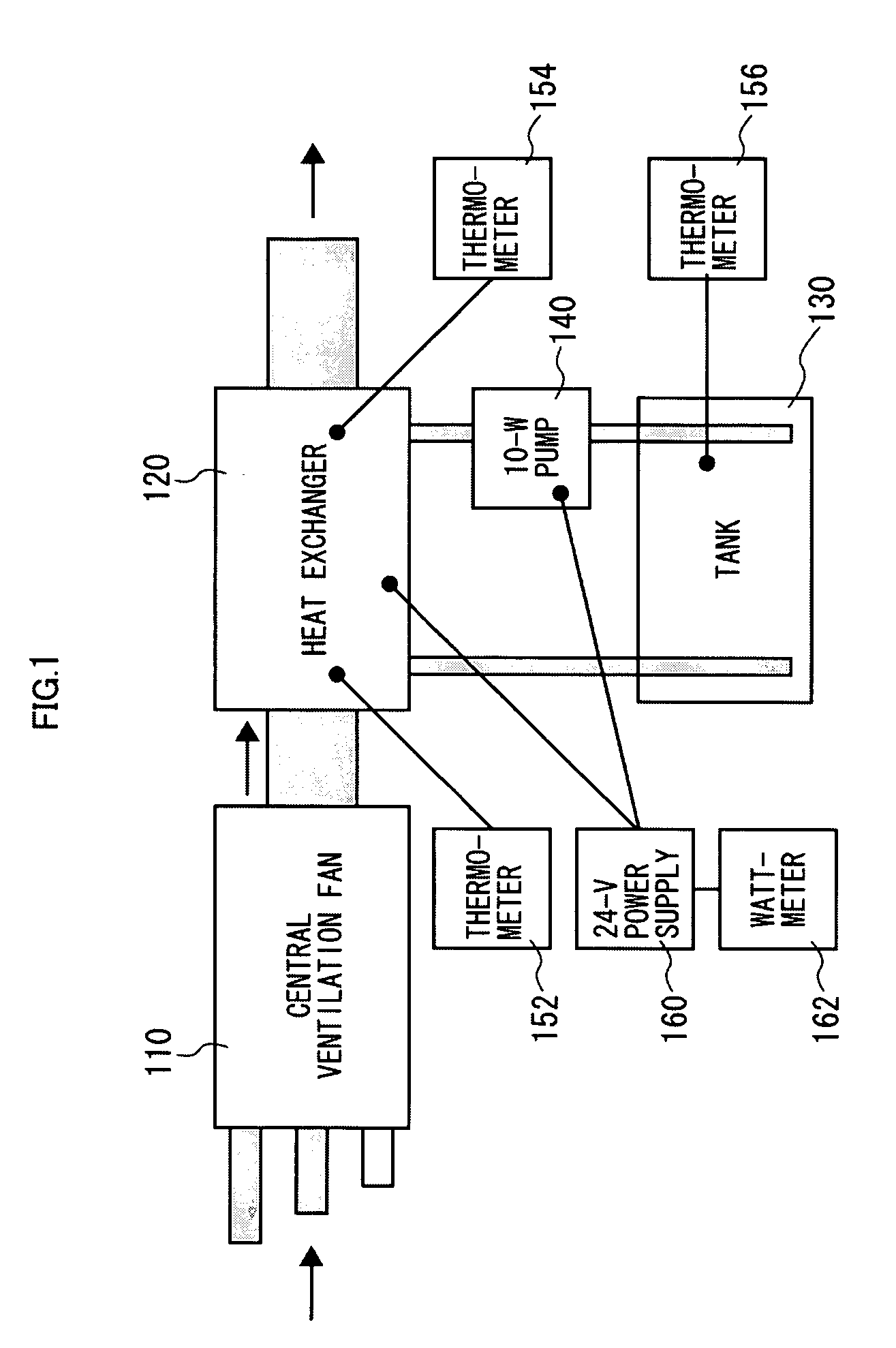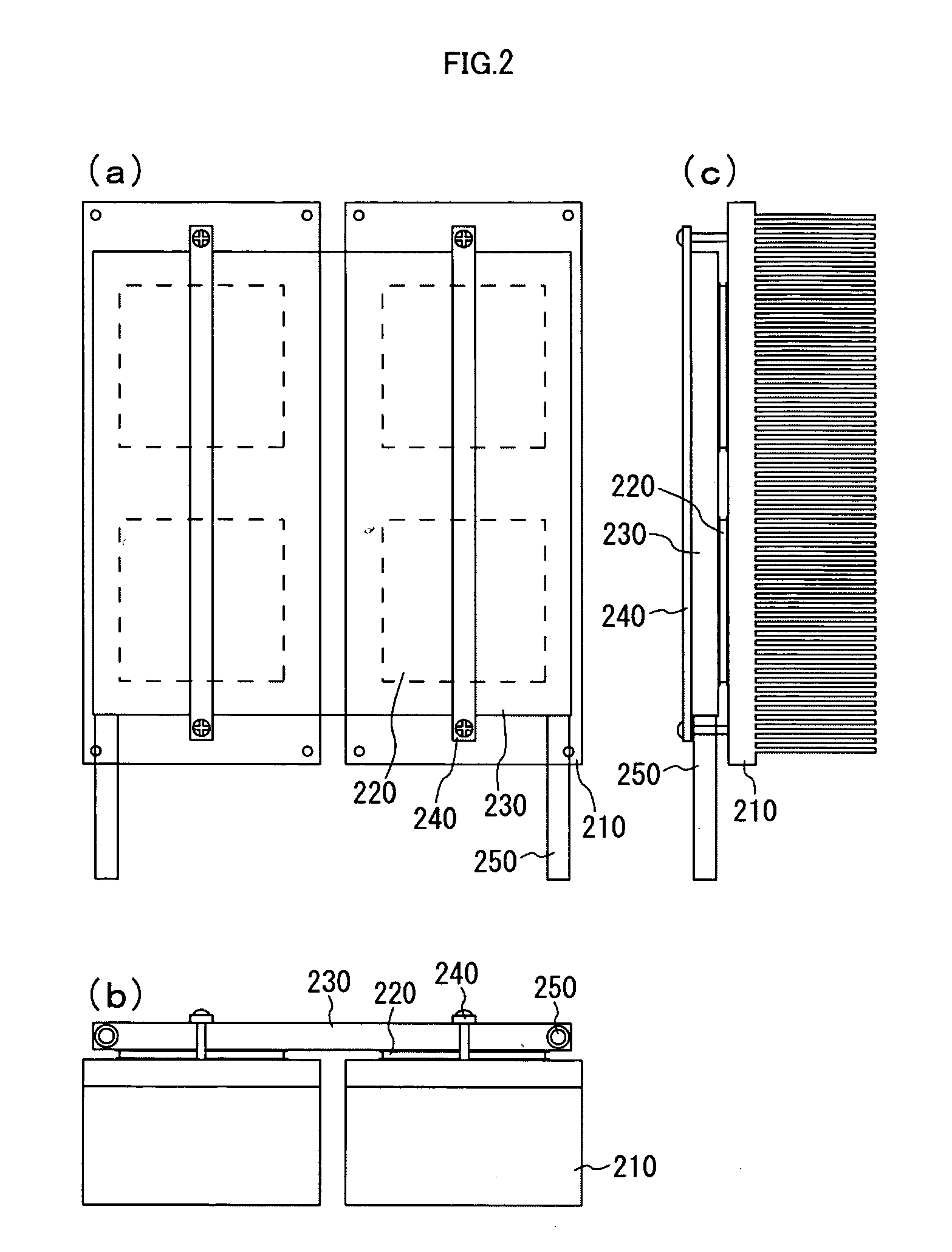Heat recovery unit and heat recovery system of building utilizing it
a heat recovery unit and heat recovery technology, applied in ventilation systems, lighting and heating apparatus, heating types, etc., can solve the problems of increasing concern for ventilation in housing, inefficient thermal energy emission during ventilation of air-conditioned housing, and the reduction of cosub>2 /sub>emission, etc., to achieve high-efficiency thermal conduction materials and reduce temperature differences
- Summary
- Abstract
- Description
- Claims
- Application Information
AI Technical Summary
Benefits of technology
Problems solved by technology
Method used
Image
Examples
Embodiment Construction
[0017] An embodiment of the present invention is described while referencing the drawings.
[0018]FIG. 1 shows an entire configuration of a heat recovery device which conducts ventilation heat to a medium. A case of heating each room in a building using the device shown in FIG. 1 is described. The heat recovery device of the embodiment uses water as a heat medium. The heat medium for the heat recovery device may be any fluid: liquid such as oil, gas such as air, solid, or a mixture thereof. On the other hand, to be described later, there is a case where fluid is not used as a heat medium.
[0019] In FIG. 1, air emitted from each room for ventilation is collected through a central ventilation fan 110. The central ventilation fan 110 is connected to a heat exchanger 120 via a ventilation pipe. Air collected in the central ventilation fan 110 is emitted from the heat recovery device after recovering heat from heated exhaust air by the heat exchanger 120. On the other hand, the heat excha...
PUM
 Login to View More
Login to View More Abstract
Description
Claims
Application Information
 Login to View More
Login to View More - R&D
- Intellectual Property
- Life Sciences
- Materials
- Tech Scout
- Unparalleled Data Quality
- Higher Quality Content
- 60% Fewer Hallucinations
Browse by: Latest US Patents, China's latest patents, Technical Efficacy Thesaurus, Application Domain, Technology Topic, Popular Technical Reports.
© 2025 PatSnap. All rights reserved.Legal|Privacy policy|Modern Slavery Act Transparency Statement|Sitemap|About US| Contact US: help@patsnap.com



